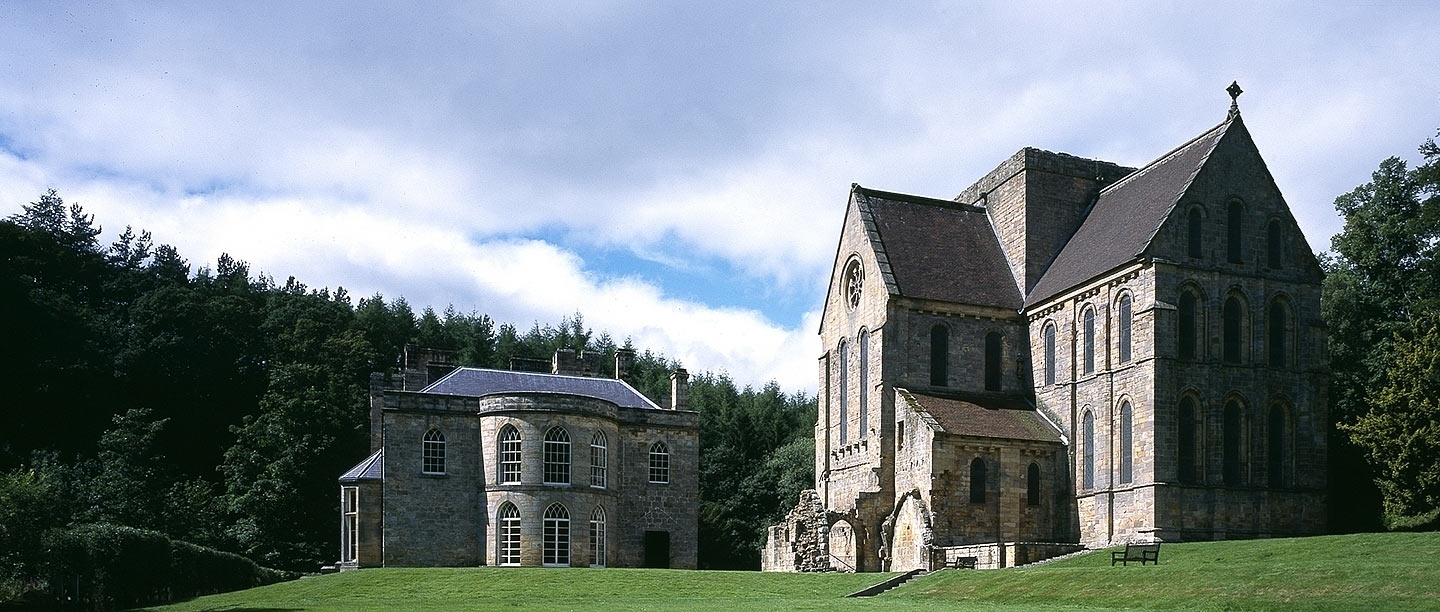Augustinian canons
Brinkburn was a monastery, or house, of regular canons – priests who lived together as a community following a monastic rule and timetable. The regular canons played a very important part in the revival and reform of monasticism in western Europe in the late 11th and early 12th centuries.
The Rule of St Augustine of Hippo (AD 354–430) governed every aspect of life within the canons’ monastery. They wore black robes (or habits) and were therefore known as the black canons. Their day was punctuated by communal services sung in the priory’s church. Time was also set aside for reading and contemplative prayer. The canons dined together, eating a largely vegetarian diet, and slept in a common dormitory.
Because they were all ordained priests, Augustinian canons frequently had spiritual roles in wider society, for example serving as parish priests or chaplains.
The Foundation of Brinkburn
Communities of Augustinian canons were founded across Europe. Their first monastery in England was established at Colchester, Essex, in 1100. Brinkburn was one of a number of Augustinian houses founded in northern England during the early 12th century.
The exact date of its foundation is not known, but it was sometime between 1130 and 1135. The founder, or patron, was William Bertram, lord of Mitford. Of Norman descent, he held extensive lands in the area.
The founding community would have consisted of a prior and 12 canons, a number that consciously recalled Christ and his apostles. Initially they would have lived in temporary wooden structures. According to the foundation charter the first prior, Ralph, came from the monastery of St Mary de Insula (St Mary of the Isle) – probably the Augustinian priory of Pentney, Norfolk.
William Bertram gave his monastery large estates, mostly near the priory. The priory had a good supply of water from the nearby river Coquet, and although in a secluded spot, it was sufficiently close to major roads to facilitate communication with the outside world.
Building the monastery
The primary motive for William Bertram’s foundation of the monastery was religious. The canons prayed daily for the salvation of their founder’s soul and the forgiveness of his sins. He died in about 1152 and was buried at Brinkburn.
Around this time, the canons started to rebuild their monastery in stone. Work would have started on the east end of the church, the most important part of the priory, where the canons celebrated daily religious services. Construction of the church took decades to complete.
The canons would then have turned their attention to completing the ranges around the cloister, where the monastery’s most important buildings were: the chapter house (formal meeting space) and dormitory (sleeping quarters) in the east range, the refectory (communal dining room) in the south range, and cellars and possibly a lodging for the prior in the west range.
There would also have been a guest house, where important visitors received hospitality, and an infirmary for the care of aged and sick canons. Workshops and agricultural buildings were located in the monastery’s outer court.
Consolidation
As well as William Bertram, several other wealthy benefactors made gifts to Brinkburn, and its estates in Northumbria expanded to include pasture, arable, woodland, fisheries, saltpans, a shop in the town of Corbridge and urban properties in Newcastle. The priory also had an income from the tithes (taxes) of the parish church at Felton.
In the mid 13th century the priory received several grants of land to pay for lights (wax or tallow candles or lamps) to burn in the priory church. There were altars dedicated to the Holy Cross, the Virgin Mary and St Peter (the priory was dedicated to Saints Peter and Paul), and an infirmary chapel was also dedicated to the Virgin.
The impact of Anglo-Scottish warfare
Located in border country, Brinkburn was badly affected by the warfare that raged between England and Scotland for much of the early 14th century. In 1314, English armies suffered a devastating defeat at the hands of the Scots at the Battle of Bannockburn. Northern England was left undefended and the monasteries provided rich pickings for Scottish invaders.
In 1315 Scottish soldiers sacked Brinkburn, forcing the community of 13 canons to flee. They were reduced to such a miserable state that they had to beg for food. The canons complained to Edward II in 1322 about deprivations caused by the Scots and in 1331 their poverty was such that they were excused a debt of £32 to the Crown.
Two years later, the priory’s financial woes caused Edward III to grant it substantial quantities of wheat and also to confirm its right to 16 shillings in annual rent from properties in Newcastle.
Despite these hardships, religious life at the monastery continued. Records of the Bishop of Durham, in whose diocese the priory lay, show that a steady stream of canons was presented for ordination as priests. The priory also still attracted local benefactors, and in 1391 it was granted the income from the tithes of the parish church at Longhorsley, about 5 miles away.
The surnames of priors and canons, which were often taken from their place of origin, show that many came from villages and towns close to the priory. These include Alderwood, Morpeth, Woodhouse and Witton.
The priory’s later years
Little is known of Brinkburn’s history in the 15th century. The remote border region was often lawless and in 1419 ‘evildoers’ raided the priory, carrying off its archives, together with books, vestments, ornaments of the church and other goods. The Bishop of Durham gave the offenders 20 days to restore the plundered goods or face a sentence of excommunication from the Church. There was further disorder in 1441, when the priory’s sheep were stolen, and in 1484 a Scottish raiding party looted the monastery, carrying off its livestock.
More positively, there is evidence that men of talent and influence were leading the priory. Both Church and state called upon their services. Prior William, who died in 1484, was a suffragan (or assistant) bishop in the Durham diocese. His tomb slab at Brinkburn is decorated with his episcopal mitre and crosier, or staff.
The end of monastic life
The violence and local lawlessness that affected the priory for much of its history continued into the 16th century. In about 1521 a canon called Richard Lighton was murdered ‘by the sword’ by one Humphrey Lisle in a dispute over land ownership.
The priory was soon caught up in the religious changes of the reign of Henry VIII and the Dissolution of the Monasteries. A valuation of church property conducted in 1535 showed that Brinkburn had an income of £68 a year. This figure, and the size of the community, which then numbered ten canons, meant that in 1536 the priory was dissolved, or closed, as one of the ‘lesser’ monasteries with an income below £200.
The last prior, William Hodchon, received a pension of £11, while the other canons left to find employment as priests.
Brinkburn after the Dissolution
The site of the monastery and much of its land were leased in 1538 to one Cuthbert Carnaby. The buildings in the west range of the cloister, where the prior’s lodging probably stood, and also the refectory to the south of the cloister, were turned into a comfortable house for the new owner.
The church was retained for parish use and it appears that Catholic worship persisted there into the reign of the Protestant King Edward VI (1547–53). Its furnishings in 1552 included a chalice, two ‘owlde’ vestments, a cope, various bells and a brass pot for holy water, the use of which was forbidden in reformed Protestant worship. The priest in 1577 was Edmund Willy. He must have been very elderly as he had been a canon at the monastery at the time of its dissolution.
By the early 17th century the church was in decay, and regular services ceased in 1683. Without a roof and falling into ruin, it was nevertheless still used for occasional baptisms and weddings well into the 18th century. It also remained a favoured location for the burial of local people.
By this time the house, which had passed through the hands of various owners, was also in decay.
Restoration
In 1792 the Brinkburn estate was bought by Joseph Hetherington. Shortly afterwards his brother John began making repairs to the house, and when John’s son-in-law, Richard Hodgson, became the owner in 1810, he transformed the eastern wing. Twenty years later his son William demolished the centre and west end of the old house and rebuilt it in Tudor Gothic style. The work was completed in 1837.
William Hodgson inherited the estates of his father-in-law, Ward Cadogan, in 1833, and added the name Cadogan to his. The Cadogan family had derived much of their wealth from plantations in Barbados and the ownership of enslaved people. In 1858 William’s son, Cadogan Hodgson Cadogan, set about re-roofing and restoring the priory church, which – with new furnishings paid for by Cadogan – was restored to Anglican worship.
Brinkburn remained the home of the Cadogans and later the Fenwicks until 1953. Nine years later the then owner, HA Cadogan Fenwick, placed the site in the care of the Ministry of Public Buildings and Works, and it opened to the public in 1965.
The site is now managed by English Heritage.
Find out more
-
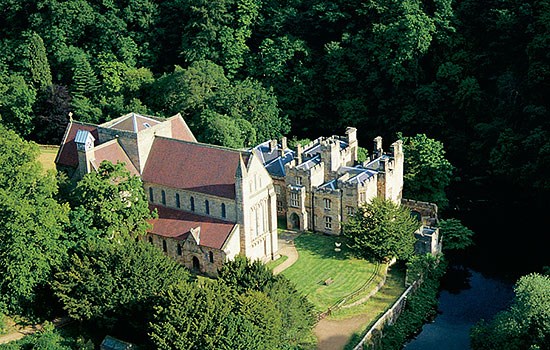
Visit Brinkburn Priory
The beautiful 12th-century church of the Augustinian priory of Brinkburn survives completely roofed and restored, while parts of the monastic buildings are incorporated into the adjacent manor house.
-
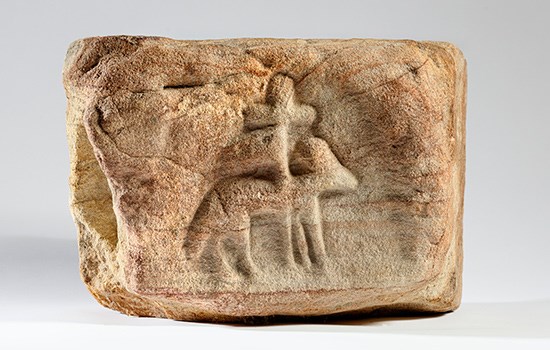
Explore the collection
Discover highlights from the collection, which ranges from 12th-century sculpture to 19th-century church furnishings.
-
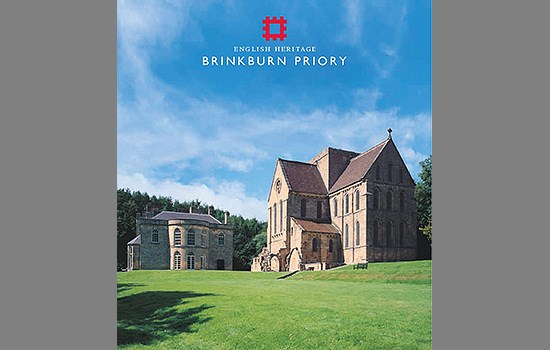
Buy the guidebook
This guidebook brings together the full history of Brinkburn, and guides the visitor on a tour of the church, priory remains and manor house.
-
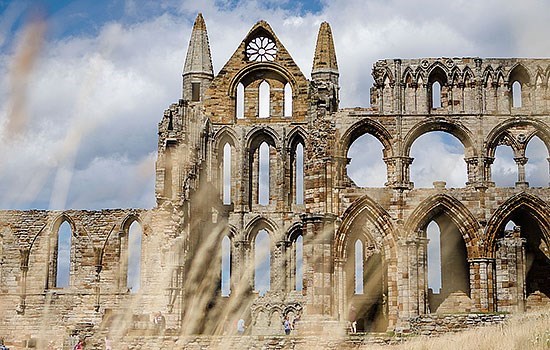
ABBEYS AND PRIORIES
Learn about England’s medieval monasteries and uncover the stories of those who lived, worked and prayed in them.
-
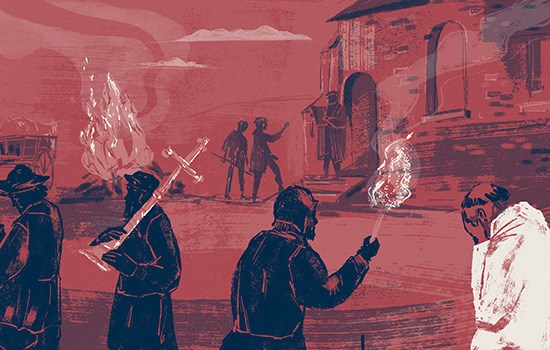
WHAT BECAME OF THE MONKS AND NUNS AT THE DISSOLUTION?
Discover what happened to the many thousands of monks and nuns whose lives were changed forever when, on the orders of Henry VIII, every abbey and priory in England was closed.
-

MORE HISTORIES
Delve into our history pages to discover more about our sites, how they have changed over time, and who made them what they are today.

